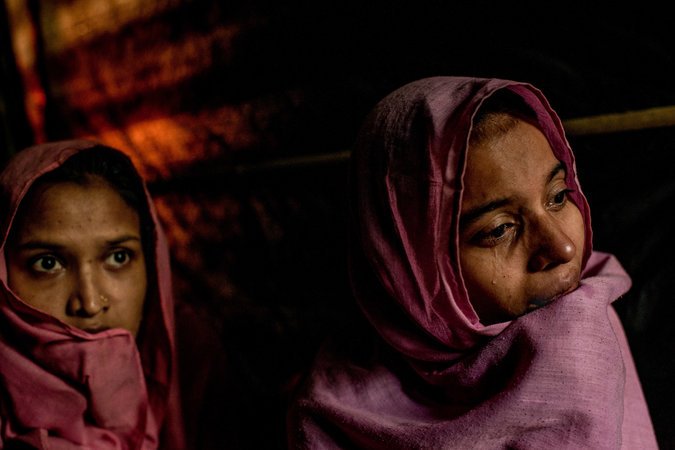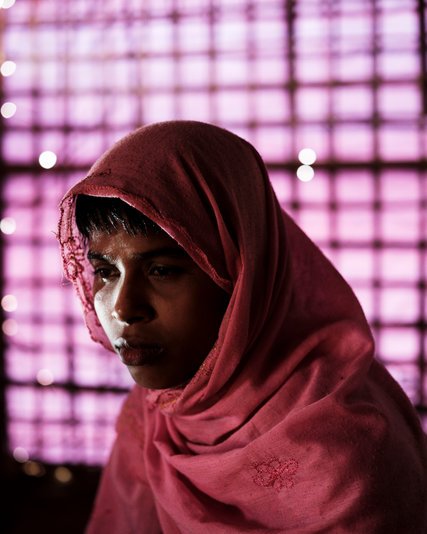Is This Genocide?
SPOTLIGHT, 18 Dec 2017
Nicholas Kristof - The New York Times
Survivors describe Myanmar soldiers killing men, raping women and burning babies in a Rohingya village.
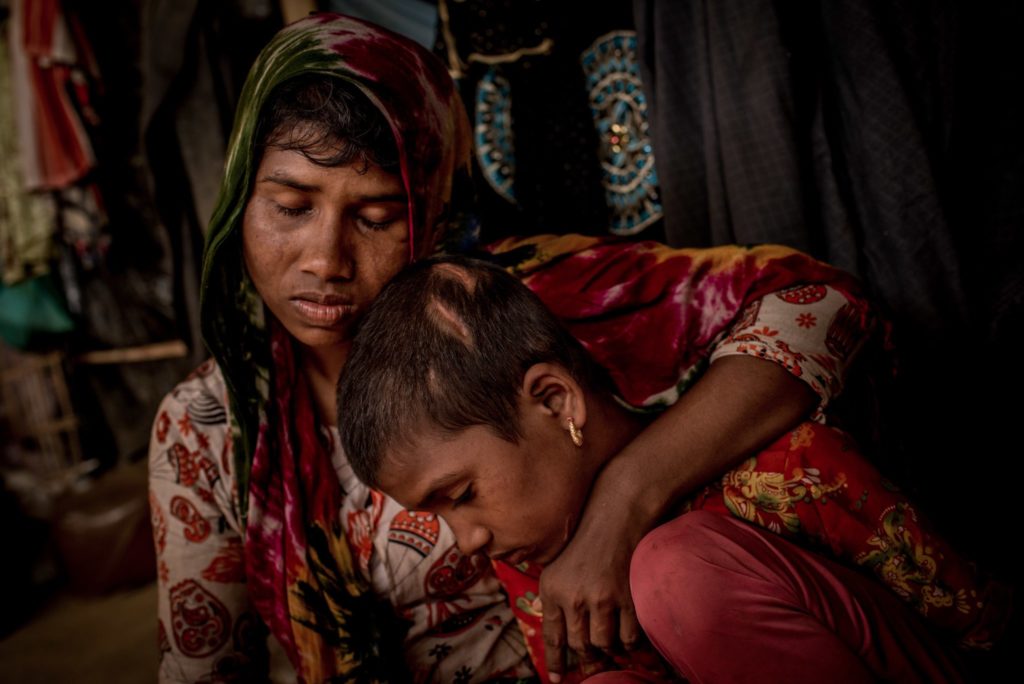
Dilbar Begum and her daughter Noor Kalima, 10, are the only survivors of a family of six. Noor’s scars were left by the machetes of Myanmar soldiers.
Credit Tomas Munita for The New York Times
15 Dec 1017 — “Ethnic cleansing” and even “genocide” are antiseptic and abstract terms. What they mean in the flesh is a soldier grabbing a crying baby girl named Suhaifa by the leg and flinging her into a bonfire. Or troops locking a 15-year-old girl in a hut and setting it on fire.
The children who survive are left haunted: Noor Kalima, age 10, struggles in class in a makeshift refugee camp. Her mind drifts to her memory of seeing her father and little brother shot dead, her baby sister’s and infant brother’s throats cut, the machete coming down on her own head, her hut burning around her … and it’s difficult to focus on multiplication tables.
“Sometimes I can’t concentrate on my class,” Noor explained. “I want to throw up.”
In the past I’ve referred to Myanmar’s atrocities against its Rohingya Muslim minority as “ethnic cleansing,” but increasingly there are indications that the carnage may amount to genocide. The U.S. Holocaust Memorial Museum, backed by a Myanmar-focused human rights organization called Fortify Rights, argues that there is “growing evidence of genocide,” and Yale scholars made a similar argument even before the latest spasms of violence.
Romeo Dallaire, a legendary former United Nations general, describes it as “very deliberate genocide.” The U.N. human rights chief, Zeid Ra’ad al-Hussein, told me, “It would not surprise me at all if a court in the future were to judge that acts of genocide had taken place.”
You judge: Here’s what Noor and her mother, Dilbar Begum, say happened in their village, Tula Toli. First, the Myanmar Army separated the women and girls from the men and boys.
“Then they shot the men and boys,” Dilbar recalled. “I saw them kill my husband and son. I was screaming.”
I delicately tried to probe whether Noor had seen the murders of her father and brother, who was just 4 years old.
“I saw everything,” Noor said, biting her lip. In a rush of words, she added: “My father was the best man in the world. We were a good team.”
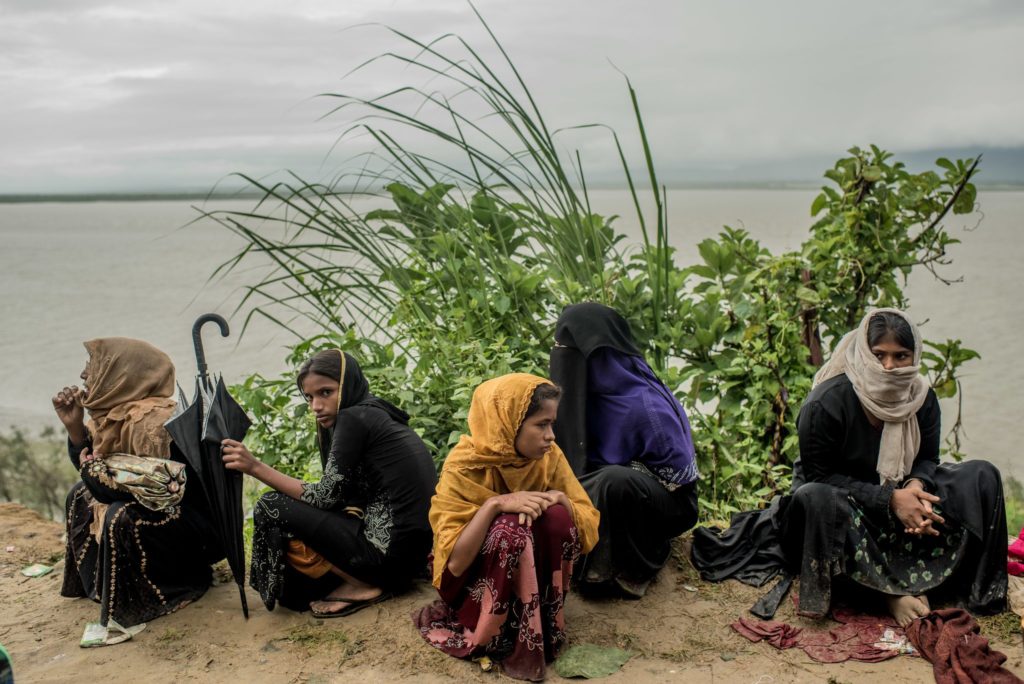
Rohingya women waiting for aid along the Teknaf Road in Bangladesh. Myanmar is visible beyond the Naf River.
Credit Tomas Munita for The New York Times
She began to cry, and soon my interpreter was wiping away tears, too. And so was I.
The Myanmar soldiers herded the women and girls into huts to be raped. Noor and Dilbar were taken into one hut, along with Noor’s 2-year-old sister, Rozia, and another brother, Muhammad Kashel, a baby still nursing.
“They took my baby and cut his throat,” Dilbar said in a trembling voice, adding that the soldiers then cut Rozia’s throat, too. Shortly afterward Noor remembers a machete blade smashing down repeatedly on her own head, her mother screaming in the background. Then she collapsed unconscious.
Dilbar said the soldiers then yanked an earring from her ear — she pointed to her torn lobe — and assaulted her beside the bodies of her children: “One soldier held me down, and another raped me.” When they were finished, she said, the soldiers chopped her on the head with the machete — she has the same angry scars on her scalp as her daughter — and left her for dead while setting fire to the hut.
The fire and smoke roused her, she said. She checked the bodies of her children and found that Noor was still breathing. Grabbing the girl, she ran into the woods. Dazed, they hiked for two days through the woods to get to the Bangladesh border.
The global and American responses have been feeble, so Myanmar is getting away with murder and rape intended to change the country’s demography. The lesson that the world’s complacency sends to other countries is that this is an ideal time to eradicate a vexing ethnic group.
Daw Aung San Suu Kyi, the Nobel Peace Prize winner, has become the apologist for these mass atrocities. Daw Suu does not control the Myanmar Army, but she has defended the military operation and mocked “a huge iceberg of misinformation.” Her Facebook page scoffed at a Rohingya woman’s report of sexual assault by soldiers as “fake rape.”
Daw Suu, if you’re reading this, I hope that for a moment you’ll open your heart and listen to the story of Hasina Begum, 21, and her 1-year-old daughter, Suhaifa. (Begum is a common honorific for women.)
Myanmar soldiers held Hasina and other village women at gunpoint, she said, while the troops executed the men and boys, doused the bodies with gasoline and turned the corpses into a bonfire. Then the troops led the women and girls, five at a time, toward a hut.
“I was trying to hide my baby under my scarf, but they saw her leg,” Hasina recalled, her voice brittle, her mouth trembling. “They grabbed my baby by the leg and threw her onto the fire.”
Hasina said she collapsed on the ground, screaming. The impatient soldiers then began to club her — she showed me scars from the beating — and dragged her into a hut with her sister-in-law, Asma Begum. The soldiers stripped the women naked and raped them, she said, and finally closed the door and set the hut on fire.
As bits of the burning roof fell down on them, Hasina said, she and Asma broke a hole in the side of the hut and ran away naked. They rolled in mud to soothe their burns, and the next day they found a Rohingya house and begged for the man inside to throw out clothes so that they could cover themselves.
A three-day hike took Hasina and Asma to Bangladesh. But Hasina still suffers from the beating and from the emptiness left by the murder of Suhaifa, and she has trouble sleeping.
“When I fall asleep, I look for my baby,” she said. “I wake up screaming.”
It’s tempting to say: That’s terrible, but it’s not our problem. But Noor’s plight, like Anne Frank’s in the 1940s, should prick the global conscience, for one lesson of history is this: Crimes against humanity are an offense against all humanity and require a response from all of us.
The latest slaughter began in August after a shadowy Rohingya rebel force attacked police and army posts, killing 12 members of the security forces. Myanmar’s Army embarked on a scorched-earth counterinsurgency, and when soldiers couldn’t find rebels they unleashed their fury on civilians.
The brutality varied widely by area, and what happened in Noor’s village was worse than typical. Human Rights Watch says, based on satellite images, that some 345 villages were burned. No one knows exactly what happened to many Rohingya: I searched for people from Rohingya villages I had visited in Myanmar in 2014 and 2015 but couldn’t find them.
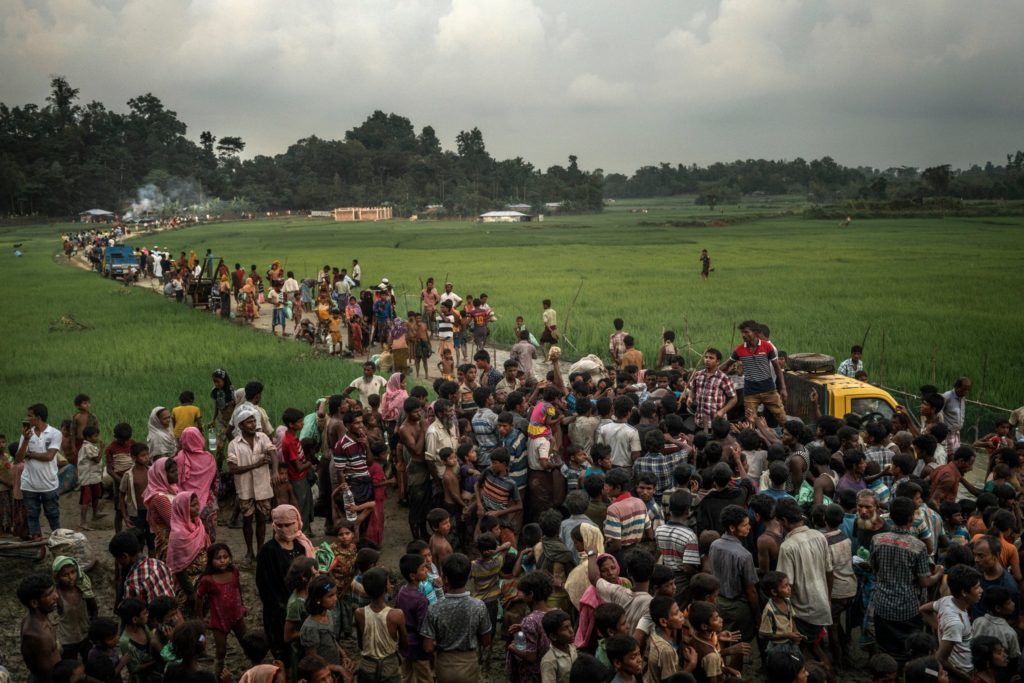
The line for aid at a refugee camp in Unchiprang, Bangladesh. Credit Adam Dean for The New York Times
Doctors Without Borders calculated that at least 9,000 Rohingya, including 1,000 small children, died after the army’s attacks, which were undertaken with a savagery that left hardened war correspondents shaken. These attacks involved the systematic use of rape to terrorize the Rohingya.
One 14-year-old girl confided her deepest secret: Four soldiers had gang-raped her. She had intended to keep the secret forever, but then she became pregnant and quietly sought medical help. An aid worker helped her get an abortion, but she still hasn’t told even her parents. She shared her story with me only because she is so grateful to the aid organization and it told her that I could be trusted.
It’s impossible to know how many women and girls have been raped, but doctors in the refugee camps report a surge in pregnancies as a result of rape, and I encountered two women who suffered fistulas caused by rape.
The Rohingya who have reached Bangladesh live in vast, sprawling refugee encampments, where I interviewed them in their tents and shacks; aid organizations provide desperately needed food, water, toilets and medical care, but cannot offer hope. Bangladesh does not want the Rohingya and does not allow aid organizations to teach Bengali, the national language, or to offer an education beyond primary school.
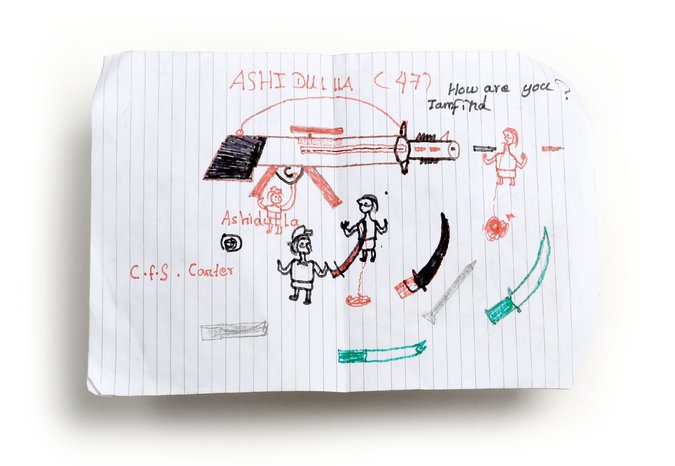
“My drawing shows a bullet hitting my next door neighbor. First they told us to leave, then they shot my neighbor. His name was Aiyukhan. When we were running away, we saw people killed. First, they shot them, and then if they didn’t die they stabbed them and then they cut their throats.” — Ashidulla, 12
Credit Alessandra Montalto/The New York Times
An organization called BRAC runs child centers where children are given paper and pens. Their drawings are wrenching: soldiers shooting guns, friends bleeding, huts burning.
“That man being shot is Sayid Azam, my neighbor,” said Ismal, an 11-year-old orphan, explaining his drawing of a huge gun firing at a man. “I saw it. I was hiding behind a bush.”
China has proposed a plan that would result in the return of the refugees to Myanmar, presumably to live stateless in concentration camps like the ones for Rohingya that I’ve previously reported on. But most are too terrified to contemplate returning. It would be an outrage to force refugees back.
Consider Shafika Begum, a 15-year-old who may be the only survivor in her family. She said she saw soldiers shoot dead her father and four brothers; they then took her, her mother and her 11-year-old sister into a hut. The soldiers cut her sister’s throat in front of her, and she said that when she screamed the soldiers clubbed her on the head and knocked her out.
Flames and smoke brought her back to consciousness: The soldiers had locked the door of the hut and set it on fire. Her mother and sister were dead, and Shafika’s clothes were on fire, but she broke through a wall and fled.
Was she raped? “I was unconscious, so I don’t know what they did to me,” she said. But she added that someone had rearranged her clothes.
Shafika walked for four days through the jungle to get to Bangladesh. Her back, left hand and both feet are burned, and she has no money to buy burn medicine. I was concerned that interviewing her might traumatize her again, but she was determined to speak.
“I want to tell the whole world my story,” she said. “I want to tell what happens in Myanmar.”
The three people whose stories I’ve focused on — Noor, the 10-year-old; Hasina, whose baby was thrown onto the fire; and Shafika, disfigured by burns — are all from the same village, Tula Toli. All these atrocities that I’ve described unfolded on a single dot of the map — and in every direction there are other villages with tragedies of their own.
Are the stories they recount true?
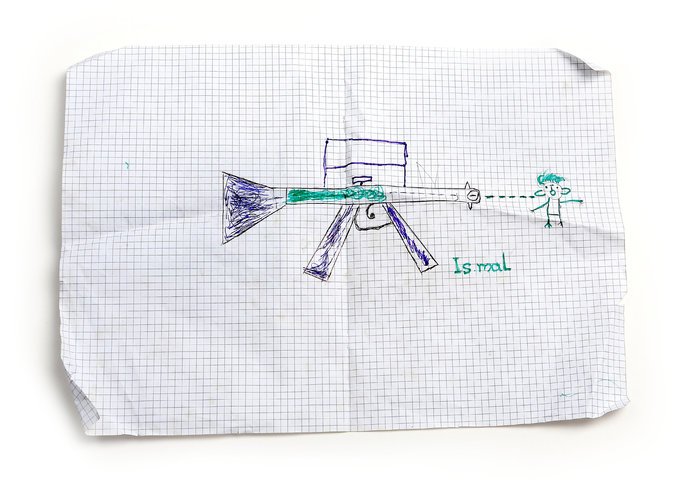
“My mother died earlier, and my father was killed by a bullet. We were running away, and I heard him killed, but I didn’t see it. My father ran back to get things, and he was shot. I heard him groaning, but I didn’t see him killed. Others told me that he had died. My two older brothers and my sister are looking after me now.” — Ismal, 11
Credit Alessandra Montalto/The New York Times
One thing I’ve learned over the decades (originally while covering China’s murder of Tiananmen democracy protesters in 1989) is that victims lie as well as perpetrators. Outrage leads to exaggerations, to elevated death tolls, to rumors becoming eyewitness accounts. But the attack on Tula Toli has been well documented by human rights organizations, including Amnesty International, Human Rights Watch and Fortify Rights, and it is substantiated by satellite photos showing the burned huts. In all, I spoke to seven people who said they were survivors from Tula Toli, and their stories meshed and cross-confirmed one another.
There is no easy solution to possible genocide; there never is. But accountability helps, so there should be a major push to prosecute Myanmar military officials in the International Criminal Court. Judges can resolve whether these crimes against humanity also amount to genocide.
An open letter from 58 human rights and aid groups has rightly called for targeted sanctions on Myanmar officials. The House of Representatives this month passed a resolution denouncing the ethnic cleansing, and both the Senate and the House have bipartisan legislation pending that would impose sanctions on Myanmar officials, yet it seems unlikely to become law any time soon.
Secretary of State Rex Tillerson has commendably described the situation as ethnic cleansing and has said that “the world can’t just stand idly by and be witness to the atrocities.” But I fear that’s exactly what is happening. Myanmar may have concluded that its slaughter is a success — denunciations from bleeding-heart journalists and human rights groups are an acceptable price for eliminating half of its Rohingya population.
We do know that international sanctions and pressure matter to Myanmar’s generals, because those were what led them to step back and hold elections. But so far there hasn’t been enough pressure exerted to stop the barbaric treatment of the Rohingya.
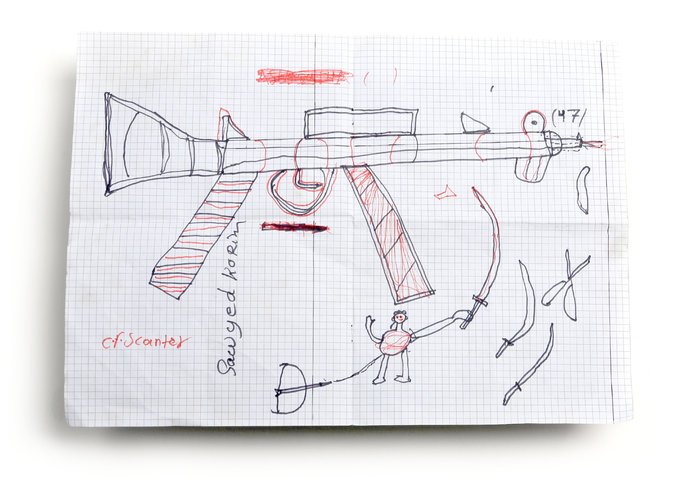
“I saw people killed. If we hadn’t run, it would have happened to us.” — Sawyid Korim, 12. Credit Alessandra Montalto/The New York Times
For individuals wondering how to help, there are fine organizations working on the ground in the camps, among them BRAC, Doctors Without Borders, Save the Children and the Hope Foundation for Women and Children of Bangladesh. First-rate advocacy on behalf of the Rohingya has been led by Fortify Rights, Human Rights Watch and Amnesty International.
A Times colleague asked how I can report on these atrocities and not lose faith in humanity. The answer is that I see not only the evil, but also among the survivors a truly inspiring resilience and courage. I am awed by people like Dilbar, Hasina and Shafika with the physical and mental strength to escape through the mountains and then the moral strength to speak out about sexual violence meant to humiliate them into silence.
Hasina may be exhausted from nightmares about searching for her baby, but she displays a moral clarity that world leaders can emulate. “They killed my family members, and they killed my world,” she told me. “When I tell my story, I feel terrible, and afterward I go cry to myself. But we need justice, and maybe this will help.”
Brave survivors like her ensure that we will never be able to shrug and say: If only we had known. We know.
_____________________________________________
 Nicholas Kristof, a columnist for The New York Times since 2001, writes op-ed columns that appear twice a week. Mr. Kristof won the Pulitzer Prize two times, in 1990 and 2006. In 2012, he was a Pulitzer finalist in Commentary for his 2011 columns that often focused on the disenfranchised in many parts of the world.
Nicholas Kristof, a columnist for The New York Times since 2001, writes op-ed columns that appear twice a week. Mr. Kristof won the Pulitzer Prize two times, in 1990 and 2006. In 2012, he was a Pulitzer finalist in Commentary for his 2011 columns that often focused on the disenfranchised in many parts of the world.
DISCLAIMER: The statements, views and opinions expressed in pieces republished here are solely those of the authors and do not necessarily represent those of TMS. In accordance with title 17 U.S.C. section 107, this material is distributed without profit to those who have expressed a prior interest in receiving the included information for research and educational purposes. TMS has no affiliation whatsoever with the originator of this article nor is TMS endorsed or sponsored by the originator. “GO TO ORIGINAL” links are provided as a convenience to our readers and allow for verification of authenticity. However, as originating pages are often updated by their originating host sites, the versions posted may not match the versions our readers view when clicking the “GO TO ORIGINAL” links. This site contains copyrighted material the use of which has not always been specifically authorized by the copyright owner. We are making such material available in our efforts to advance understanding of environmental, political, human rights, economic, democracy, scientific, and social justice issues, etc. We believe this constitutes a ‘fair use’ of any such copyrighted material as provided for in section 107 of the US Copyright Law. In accordance with Title 17 U.S.C. Section 107, the material on this site is distributed without profit to those who have expressed a prior interest in receiving the included information for research and educational purposes. For more information go to: http://www.law.cornell.edu/uscode/17/107.shtml. If you wish to use copyrighted material from this site for purposes of your own that go beyond ‘fair use’, you must obtain permission from the copyright owner.
